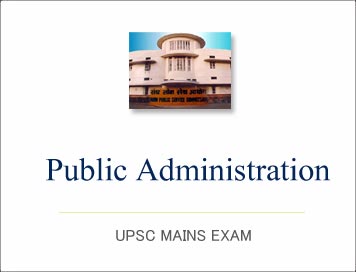Public Administration Mains 2017 : Solved Paper Question Paper-2 (Question-6)

Public Administration Mains 2017 : Solved Paper Question Paper-2 (Question-6)
(SECTION A)
Q6) a) “The Prime Ministers awards for Excellence in Public Administration encourage good governance initiatives. “ Discuss some such initiatives by the Civil Servants in this context.(20) (Civil Services)
ANSWER : Government was almost the sole provider of goods and services, which left a lot of scope for ignoring one’s shortcomings. However, now, very often, people perceive that the private sector offers better services than Government. Alternatives now being available in several areas, the responsibilities of Government officers have increased. This increase is not in terms of scope of work, but in terms of the challenge.
The Prime Minister presents awards for Excellence in Implementation of Priority Programmes and addressed Civil Servants on the occasion of the eleventh Civil Services Day. V.S. Pandey, a senior IAS officer, Uttar Pradesh cadre, joined hands with Julio Ribeiro, the former police chief, and a few others, under the auspices of a non-governmental organisation-styled India Rejuvenation Initiative (IRI), to file a writ petition on the need to ferret out black money owned by Indians and stashed abroad.
The few mavericks who display a semblance of remonstrance are heavily penalised so as to deter potential dissenters. It is this sordid state of affairs that Justices Chelameshwar and Sikri will have to be hailed for coming squarely to the rescue of a hapless senior official of the U.P. government for his alleged intransigence.
b) “Implementation of Goods and Services Tax (GST) has led to a paradigm shift in the Centre-State relations , both financially and politically .” Analyze with examples (20) (State Government and Administration)
ANSWER : The implementation of GST charts a new course for fiscal federalism in India. It paves the way for India’s largest-ever tax reform. It defines a new vision of federalism where the tangles between the Union and state governments in exercise of their taxation powers give way to collective and harmonious tango.
GST enshrines the following guiding principles :
First, the tax will apply to both goods and services and any mixture of the two.
Second, the tax will apply to the full supply chain and by way of sale or lease or any other arrangement.
Third, tax will apply only on a destination, rather than origin, basis.
Fourth, tax can be levied on a given base by both the Centre and the states concurrently. Presently, taxation powers of the Centre and the states are mutually exclusive.
Finally, no tax can apply to impede the free flow of goods and services in the common market of India.
The biggest apprehension of the states has been the loss of fiscal autonomy. The Constitutional Amendment strikes a delicate balance between the demands of the fiscal autonomy of the states and the need for harmonisation of 38 different taxes.
First, the Centre and the states retain the power to design taxes as they consider appropriate within the defined framework.
Second, the states have insisted on the exclusion of large chunks of the economy such as petroleum, alcohol, electricity and real estate from the GST base.
Third, the states have also retained the autonomy to set the tax rates under GST within a narrow band of 2%. Finally, the states have been given assurance of compensation for any loss in revenues for a five year period.
